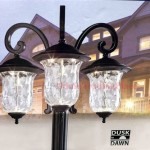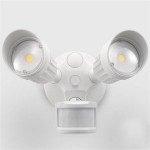Can Outdoor Furniture Get Wet? Understanding Water Resistance and Maintenance
Outdoor furniture is designed to withstand the elements, but the question of whether it can get wet isn't a simple yes or no. The answer depends on several factors, including the type of material used, the construction of the furniture, and the level of protection it has. Understanding these factors is crucial for making informed decisions about purchasing outdoor furniture and ensuring its longevity.
Different materials react differently to moisture. Some are naturally water-resistant, while others require treatments and specific care to prevent water damage. Ignoring the specific water resistance of outdoor furniture can lead to premature wear, structural damage, and aesthetic degradation. This article explores the nuances of water exposure and outdoor furniture, providing insights into various materials, protective measures, and maintenance strategies.
Material Matters: How Different Materials React to Water
The primary factor determining whether outdoor furniture can withstand getting wet is the material from which it is constructed. Certain materials are inherently more water-resistant than others. A detailed look at common outdoor furniture materials is necessary to understand their individual vulnerabilities and strengths.
Teak: Teak is a dense, tropical hardwood renowned for its natural oil content, which makes it highly resistant to water, rot, and insects. This inherent water resistance allows teak furniture to withstand prolonged exposure to rain and humidity without significant damage. However, prolonged water exposure can lead to a silver-gray patina on the surface, which, while aesthetically pleasing to some, represents a change in the wood's finish. Regular cleaning and the application of teak oil can help maintain its original color and further enhance its water resistance.
Aluminum: Aluminum is another popular choice for outdoor furniture because it is naturally rust-resistant. Unlike iron or steel, aluminum does not corrode when exposed to water and oxygen. However, while the aluminum frame itself will not rust, prolonged exposure to moisture can lead to the development of oxidation, which appears as a white, powdery residue on the surface. Powder coating aluminum furniture provides an extra layer of protection against oxidation and enhances its overall durability. Proper cleaning and maintenance, including wiping down the furniture after rain, can help prevent oxidation buildup.
Wicker (Resin/Synthetic): Synthetic wicker, made from polyethylene or PVC, is specifically designed for outdoor use and is highly resistant to water damage. Unlike natural wicker, which can rot and mildew when wet, synthetic wicker can withstand prolonged exposure to rain and humidity without deteriorating. Its non-porous nature prevents water absorption, making it easy to clean and maintain. However, it's important to note that the frame underneath the wicker weaving can still be susceptible to rust if it's made of untreated steel. Therefore, it's essential to choose furniture with rust-resistant frames or regularly inspect and treat any exposed metal parts.
Plastic (Polypropylene): Polypropylene plastic is a cost-effective and lightweight material often used in outdoor furniture. It is inherently water-resistant and does not rot or corrode when exposed to moisture. However, plastic furniture can become brittle and crack over time, especially when exposed to prolonged sunlight and temperature fluctuations. Color fading is another potential issue. While water itself may not damage the material, the combined effects of water, sunlight, and temperature changes can shorten its lifespan. UV inhibitors can be added to the plastic during manufacturing to help prevent fading and cracking.
Steel/Iron: Steel and iron furniture are strong and durable, but they are also susceptible to rust when exposed to water. Untreated steel and iron will quickly corrode if not protected with a rust-resistant coating. Powder coating or painting can provide a barrier against moisture, but these coatings can chip or scratch over time, exposing the metal underneath. Regular inspection and touch-up painting are essential to prevent rust from spreading. Additionally, storing steel and iron furniture in a dry place during the off-season can significantly extend its lifespan.
Cushion Fabrics: Outdoor cushions are typically made from water-resistant fabrics like acrylic, polyester, or olefin. These fabrics are designed to repel water and resist fading and mildew. However, it's important to understand the difference between water-resistant and waterproof. Water-resistant fabrics can withstand light rain and splashes, but they are not completely impervious to water. Prolonged exposure to heavy rain can saturate the fabric and allow water to seep into the cushion filling. To prevent mildew and mold growth, it's crucial to allow cushions to dry completely after they get wet. Consider using cushion covers or storing cushions indoors during periods of heavy rain or when they are not in use.
Protective Measures: Enhancing Water Resistance
Even with water-resistant materials, taking proactive steps to enhance the furniture's resistance to moisture can significantly extend its lifespan. These measures can range from applying protective coatings to implementing smart storage solutions.
Protective Coatings and Sealants: Applying protective coatings or sealants can provide an extra layer of defense against water damage. For wooden furniture, applying a sealant or varnish can help prevent water absorption and protect the wood from rot and decay. For metal furniture, applying a rust-resistant primer and paint can help prevent corrosion. Fabric sealants can be used on cushions and upholstery to repel water and prevent stains. It's important to choose products specifically designed for outdoor use and to follow the manufacturer's instructions carefully.
Furniture Covers: Using furniture covers is one of the most effective ways to protect outdoor furniture from the elements, including rain, sun, and wind. Covers are typically made from water-resistant or waterproof materials and are designed to fit snugly over the furniture. They help prevent water from penetrating the furniture and protect it from fading and damage caused by UV rays. It's important to choose covers that are breathable to prevent moisture buildup underneath, which can lead to mildew growth. Regularly cleaning the covers and allowing them to dry completely before storing them is also essential.
Strategic Placement: The location of outdoor furniture can also affect its exposure to water. Placing furniture under a covered patio, awning, or gazebo can provide protection from rain and sun. Avoiding placing furniture directly on the ground can also help prevent water damage, as moisture can wick up from the ground and into the furniture. Using furniture risers or placing furniture on a deck or patio can help improve drainage and prevent water from pooling around the base of the furniture.
Cushion Inserts and Drainage: Even with water-resistant covers, cushions can still absorb moisture. Using cushion inserts made from water-resistant materials, such as closed-cell foam, can help prevent water from soaking into the cushion filling. Adding drainage holes to cushion covers can also help water escape quickly. Regularly fluffing and rotating cushions can help promote air circulation and prevent moisture from becoming trapped inside.
Maintenance and Care: Prolonging the Life of Outdoor Furniture
Regular maintenance is key to keeping outdoor furniture in good condition and extending its lifespan. This includes cleaning, inspecting, and addressing any signs of damage promptly. A consistent maintenance routine can help prevent minor issues from escalating into major problems.
Regular Cleaning: Regularly cleaning outdoor furniture can help remove dirt, debris, and mildew that can contribute to water damage. Use a mild soap and water solution and a soft brush or cloth to clean the furniture. Avoid using harsh chemicals or abrasive cleaners, as these can damage the furniture's finish. Rinse the furniture thoroughly with clean water and allow it to dry completely before storing it or using it again. For cushions and upholstery, spot clean stains as soon as they occur to prevent them from setting in.
Immediate Spill Response: Addressing spills promptly can prevent stains and water damage. Blot up spills immediately with a clean, dry cloth. For stubborn stains, use a mild detergent or stain remover specifically designed for outdoor fabrics. Avoid rubbing the stain, as this can spread it and damage the fabric. Rinse the area thoroughly with clean water and allow it to dry completely.
Regular Inspection: Regularly inspect outdoor furniture for signs of damage, such as cracks, chips, rust, or mildew. Address any issues promptly to prevent them from worsening. Repair or replace damaged parts as needed. For metal furniture, touch up paint or apply rust-resistant coatings to prevent corrosion. For wooden furniture, apply sealant or varnish to protect the wood from water damage.
Seasonal Storage: Storing outdoor furniture during the off-season can significantly extend its lifespan. Clean the furniture thoroughly before storing it and allow it to dry completely. Store the furniture in a dry, covered location, such as a garage, shed, or basement. If storing furniture outside, use furniture covers to protect it from the elements. Cushions and upholstery should be stored indoors to prevent mildew and moisture damage.
Understanding the properties of different materials, implementing protective measures, and adopting a proactive maintenance routine are essential for ensuring the longevity of outdoor furniture. While some materials are naturally more water-resistant than others, all outdoor furniture benefits from careful attention and preventative care. By investing time and effort into protecting outdoor furniture from the elements, owners can enjoy its beauty and functionality for years to come.

Can Patio Furniture Get Wet Simple Tips To Protect It My Backyard Life

Can Rattan Garden Furniture Get Wet Centre Ping

Can Outdoor Furniture Cushions Get Wet Patioline

4 Ways To Waterproof Wood Outdoor Furniture Resort Blog

Can Outdoor Rugs Get Wet Yes But You Should Worst Room

What To Do If Your Rattan Furniture Gets Wet Rattantree

Can Outdoor Rugs Get Wet Common Myths Questions Answered

How To Care For Your Outdoor Cushions If They Get Wet

What Happens To Wicker Furniture When It Gets Wet Hunker

Can Outdoor Rugs Get Wet Common Myths Questions Answered
Related Posts







